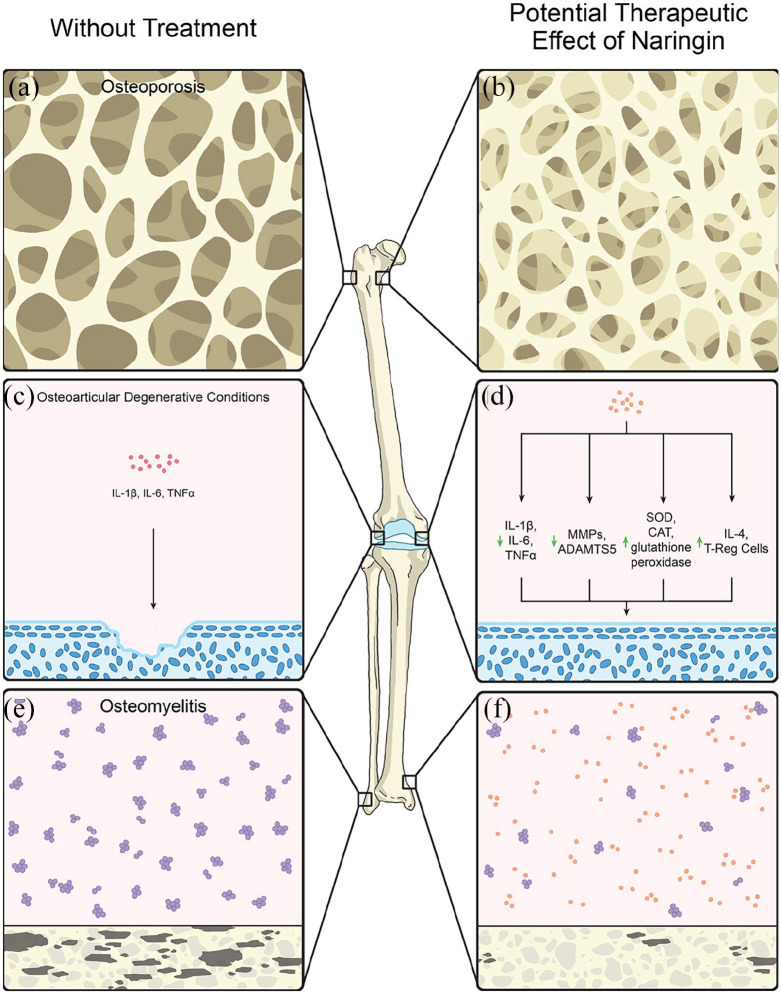Figure 2.
In vivo effects of naringin. (a) Osteoporosis secondary to the loss of estrogen’s anabolic effects during menopause, the proinflammatory state of diabetes that promotes osteoclastogenesis, or the loss of p-ERK due to glucocorticoid use leads to decreased trabeculae volume, yielding an increased risk of fracture. (b) Naringin prevents osteoporotic bone fractures by increasing the number and thickness of trabeculae. (c) Osteoarticular degenerative conditions such as osteoarthritis, ankylosis spondylitis, and rheumatoid arthritis are characterized by increases in the expression of inflammatory cytokines such as IL-1β, IL-6, and TNF-α, decreases in reactive oxygen species-neutralizing enzymes such as SOD, CAT, and glutathione peroxidase, and increases in cartilage-degrading enzymes, including MMPs and ADAMTS5. (d) Naringin has been shown to be cartilage-protective by decreasing the expression of these inflammatory cytokines, reactive oxygen species, and destructive enzymes. Naringin has also been shown to increase the cartilage-protective effects of IL-4 and Tregs. (e) Osteomyelitis is characterized by the proliferation of bacteria that degrade bone both directly via bacterial products and indirectly by inducing inflammation productive of osteoclastic cytokines. (f) Naringin demonstrates antibacterial effects against common Gram-positive and Gram-negative organisms commonly implicated in the pathogenesis of osteomyelitis.
CAT, catalase; IL, interleukin; MMP, matrix metalloproteinase; SOD, superoxide dismutase; TNF, tumor necrosis factor; Treg, regulatory T-cell;

